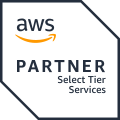The Rise of Ransomware and Steps to Mitigate its Risks
Eliminate the Risk of Ransomware Attacks
New technology developments always come with new threats. Industries and infrastructures all over the world depend on digital systems to operate— and while these systems enable increased efficiency and profitability, they open the door for cybercriminals to take advantage of their weaknesses.
Read this white paper to see how establishing both prevention and recovery plans is critical in mitigating eliminating these risks.


